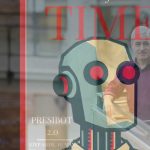To open-source, or not. Where does monetization fit in? Well, for every proprietary software juggernaut, there’s an open-source challenger laboring in the shadows. Their success is predicated on building a self-functioning developer community dividing, assuming and executing tasks to keep the engine running–no short order.
Against stacked odds, Nir Gazit, co-founder of Traceloop, has prevailed—and in record time. In just nine months, Traceloop’s open-source project has attracted over 5,000 developers, turning what started as a niche tool into a growing force in the AI ecosystem.
In an exclusive interview with StartupHub.ai, and succeeding our last interview, Gazit shared the strategies that have since helped TraceLoop achieve remarkable growth.
“We managed to build a community with 5K developers.”
Their success didn’t happen overnight. According to Gazit, a combination of targeted promotion and relentless community engagement played a crucial role in those first critical days.
“We focused heavily on promoting open source right from the start,” Gazit said. Platforms like Reddit and other developer-centric communities were key to getting the word out. “We were posting regularly in places where engineers look for new projects—showcase threads, forums, you name it. That initial visibility was crucial.”
But visibility is just seed germination–dedicated cultivation must follow.
Open source refers to software whose source code is freely available for anyone to view, modify, and distribute, fostering a collaborative development environment. In contrast, proprietary or closed-source software restricts access to its source code. Only the original creators or licensed entities can modify and distribute it.
To sustain interest and turn casual observers into active contributors, Traceloop made it easy for developers of all levels to get involved. Issues in the repository were tagged as ‘good first issue’ or ‘beginner issue,’ lowering the barrier to entry and encouraging even novice developers to dive in. “That way, even those new to the project could dive in and start contributing right away.”
“Our license is a classic open-source license, no strings attached.”
For other startups in the open-source space, Traceloop’s journey offers valuable lessons. First, focus on building a community, not just a product. From day one, Traceloop’s Slack channel became a hub of activity, where developers could ask questions, share ideas, and troubleshoot together. Gazit and his team were always present, providing guidance and fostering collaboration. “That sense of being heard and supported is what kept people coming back,” Gazit notes.
Second, don’t underestimate the power of strategic partnerships. Traceloop’s commitment to open-source principles made it an attractive partner for industry giants like Microsoft. But what truly set Traceloop apart was its focus on creating an open protocol, something that could integrate seamlessly with existing tools and platforms. “This wasn’t just about building a tool,” Gazit emphasizes. “It was about creating something that could become a standard.”
Open-source is a competitive advantage.
Traceloop’s success is part of a broader trend in the tech industry. According to GitHub’s latest Octoverse report, developers made 301 million contributions to open-source projects in 2023 alone. This surge speaks to the growing importance of open-source in shaping Generative AI, and Agentic AI, in particular.
These startups are equipping the developer community with the tools they need to build sophisticated AI applications.
GitHub’s Accelerator program is playing a crucial role in this transformation, supporting projects that democratize access to cutting-edge technologies. The program’s focus on open-source innovation is helping to drive the next wave of AI development, making it easier for startups to scale and succeed in an increasingly competitive market.
Even the Large Language Models (LLMs) developers are at the heart of this movement.
Projects like Meta’s Llama and Hermes 3, an open-source AI model developed by Lambda in collaboration with Nous Research, are espousing the benefits thereof. Hermes 3, with its 405 billion parameters, showcases the power of open-source LLMs to drive innovation and provide highly adaptable, user-centric AI models. Mark Zuckerberg recently noted in his oped Open Source AI Is the Path Forward that it offers “advantages that closed systems simply cannot match”—greater modifiability, enhanced security, and the ability to avoid vendor lock-in.
Yann LeCun, Meta’s Chief AI Scientist (and one of the Deep Learning godfathers), has been a vocal proponent. Since 2023, he’s argued that open-source AI models will soon dominate the field, much like open-source software platforms did in the past. He predicted a future where a few open-source inference codes, free pre-trained base models, and crowd-sourced fine-tuned models form the foundation for customized products, including possibly closed-source ones. Case in point, open-source infrastructure like Linux eventually outcompeted proprietary systems from Microsoft and Sun Microsystems.
Still, critics contend that closed-source models might outpace open-source efforts. But Agentic AI is on the move, and there’s a huge open source community behind it.
As a piece of the LLM app infrastructure, Gazit is cautiously optimistic about the timeline of Agentic AI’s arrival, slightly longer than what critics forecast. “The technology still has a long way to go.”
As the open-source AI community continues to expand, Traceloop’s journey is likely to be a dime a dozen. It’s the continuous innovation that maintains market differentiation.
Gazit teased us with upcoming features that will enhance Traceloop’s utility even further, including support for multimodality and more detailed metrics. “We’ll give developers all the tools they need to understand and optimize their AI workflows.”


